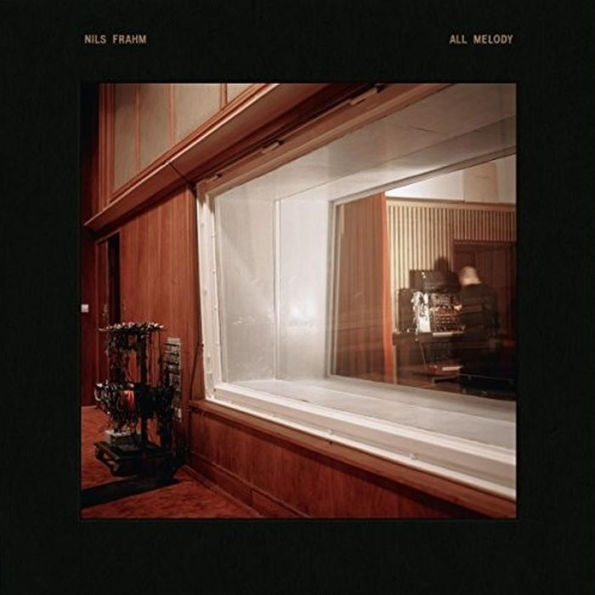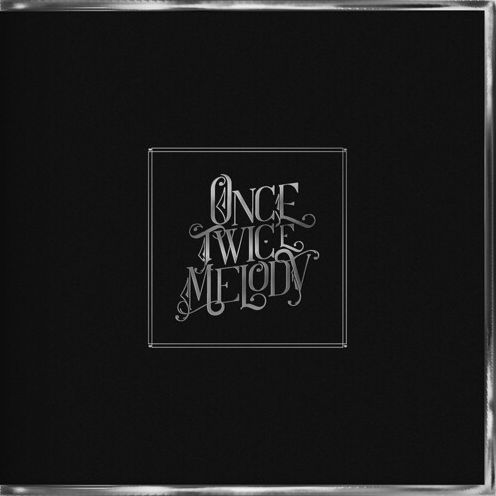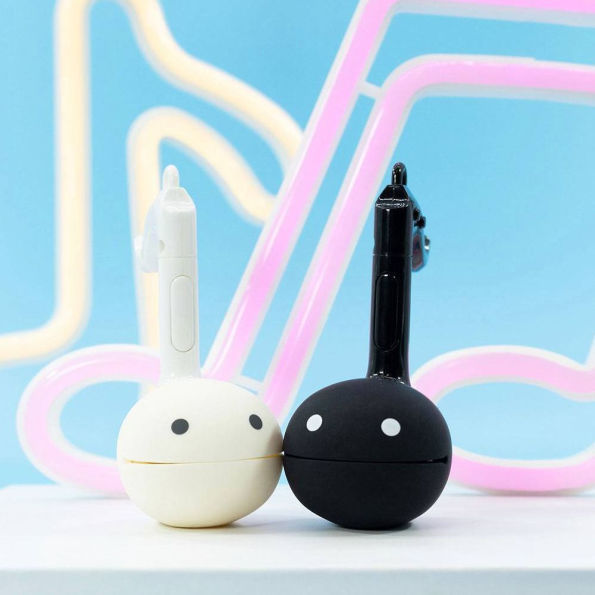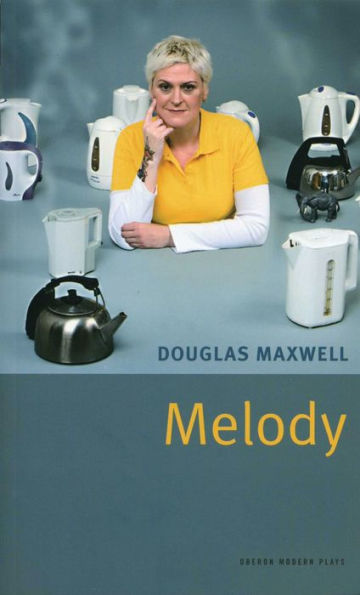Home
All Melody
Barnes and Noble
Loading Inventory...
All Melody in Bloomington, MN
Current price: $31.99


All Melody in Bloomington, MN
Current price: $31.99
Loading Inventory...
Size: OS
All Melody
is the first album German composer/musician
Nils Frahm
recorded in a studio he spent two years building, located in the historical Funkhaus complex in Berlin. In the liner notes, he goes into extensive detail about the studio's acoustics, and how the recording process took several turns, resulting in something that often diverged drastically from his original intentions. He mentions that he wanted to turn sounds into other sounds, and hear things he'd never heard before. To achieve this, he deviated from his previous self-imposed rule of not including guest musicians on his solo albums, and worked with an extensive cast of collaborators, including cellist
Anne Mueller
, percussionist
Sven Kacirek
(who plays bass marimba on the album), trumpeter
Richard Koch
, and London-based choral ensemble
Shards
. The result is some of the richest and most ambitious work he's created to date. However, he manages to maintain a simplicity and intimacy, and above all, a sense of spaciousness.
Frahm
explains that all of the album's sounds were played using physical instruments, as opposed to being digitally generated and edited, and that everything was mixed and mastered at a lower volume in order to preserve the original dynamics and keep the music from being compressed. It's closer in spirit to
's acclaimed 2013 live album
Spaces
than any of his other recordings, and both the complex, arpeggio-heavy title track and the similar "#2" recall that album's breathtaking standout "Says." "Kaleidoscope" also ventures in this direction, adding a colorful, rapid pipe organ pattern and graceful choral vocals.
seems like a curious title for an album which often seems soft and sparse; the keys clacking during "My Friend the Forest" are almost as loud as the notes themselves, and the whole piece is set against a backdrop of silence.
Kacirek
and
Mueller
are credited, but it's difficult to discern their contributions to the piece. The title
seems to refer to the singularity of the sounds combining together. It also suggests that while empty space is often a major element to the album, what is present is entirely melodic, and purely based in emotions. ~ Paul Simpson
is the first album German composer/musician
Nils Frahm
recorded in a studio he spent two years building, located in the historical Funkhaus complex in Berlin. In the liner notes, he goes into extensive detail about the studio's acoustics, and how the recording process took several turns, resulting in something that often diverged drastically from his original intentions. He mentions that he wanted to turn sounds into other sounds, and hear things he'd never heard before. To achieve this, he deviated from his previous self-imposed rule of not including guest musicians on his solo albums, and worked with an extensive cast of collaborators, including cellist
Anne Mueller
, percussionist
Sven Kacirek
(who plays bass marimba on the album), trumpeter
Richard Koch
, and London-based choral ensemble
Shards
. The result is some of the richest and most ambitious work he's created to date. However, he manages to maintain a simplicity and intimacy, and above all, a sense of spaciousness.
Frahm
explains that all of the album's sounds were played using physical instruments, as opposed to being digitally generated and edited, and that everything was mixed and mastered at a lower volume in order to preserve the original dynamics and keep the music from being compressed. It's closer in spirit to
's acclaimed 2013 live album
Spaces
than any of his other recordings, and both the complex, arpeggio-heavy title track and the similar "#2" recall that album's breathtaking standout "Says." "Kaleidoscope" also ventures in this direction, adding a colorful, rapid pipe organ pattern and graceful choral vocals.
seems like a curious title for an album which often seems soft and sparse; the keys clacking during "My Friend the Forest" are almost as loud as the notes themselves, and the whole piece is set against a backdrop of silence.
Kacirek
and
Mueller
are credited, but it's difficult to discern their contributions to the piece. The title
seems to refer to the singularity of the sounds combining together. It also suggests that while empty space is often a major element to the album, what is present is entirely melodic, and purely based in emotions. ~ Paul Simpson
All Melody
is the first album German composer/musician
Nils Frahm
recorded in a studio he spent two years building, located in the historical Funkhaus complex in Berlin. In the liner notes, he goes into extensive detail about the studio's acoustics, and how the recording process took several turns, resulting in something that often diverged drastically from his original intentions. He mentions that he wanted to turn sounds into other sounds, and hear things he'd never heard before. To achieve this, he deviated from his previous self-imposed rule of not including guest musicians on his solo albums, and worked with an extensive cast of collaborators, including cellist
Anne Mueller
, percussionist
Sven Kacirek
(who plays bass marimba on the album), trumpeter
Richard Koch
, and London-based choral ensemble
Shards
. The result is some of the richest and most ambitious work he's created to date. However, he manages to maintain a simplicity and intimacy, and above all, a sense of spaciousness.
Frahm
explains that all of the album's sounds were played using physical instruments, as opposed to being digitally generated and edited, and that everything was mixed and mastered at a lower volume in order to preserve the original dynamics and keep the music from being compressed. It's closer in spirit to
's acclaimed 2013 live album
Spaces
than any of his other recordings, and both the complex, arpeggio-heavy title track and the similar "#2" recall that album's breathtaking standout "Says." "Kaleidoscope" also ventures in this direction, adding a colorful, rapid pipe organ pattern and graceful choral vocals.
seems like a curious title for an album which often seems soft and sparse; the keys clacking during "My Friend the Forest" are almost as loud as the notes themselves, and the whole piece is set against a backdrop of silence.
Kacirek
and
Mueller
are credited, but it's difficult to discern their contributions to the piece. The title
seems to refer to the singularity of the sounds combining together. It also suggests that while empty space is often a major element to the album, what is present is entirely melodic, and purely based in emotions. ~ Paul Simpson
is the first album German composer/musician
Nils Frahm
recorded in a studio he spent two years building, located in the historical Funkhaus complex in Berlin. In the liner notes, he goes into extensive detail about the studio's acoustics, and how the recording process took several turns, resulting in something that often diverged drastically from his original intentions. He mentions that he wanted to turn sounds into other sounds, and hear things he'd never heard before. To achieve this, he deviated from his previous self-imposed rule of not including guest musicians on his solo albums, and worked with an extensive cast of collaborators, including cellist
Anne Mueller
, percussionist
Sven Kacirek
(who plays bass marimba on the album), trumpeter
Richard Koch
, and London-based choral ensemble
Shards
. The result is some of the richest and most ambitious work he's created to date. However, he manages to maintain a simplicity and intimacy, and above all, a sense of spaciousness.
Frahm
explains that all of the album's sounds were played using physical instruments, as opposed to being digitally generated and edited, and that everything was mixed and mastered at a lower volume in order to preserve the original dynamics and keep the music from being compressed. It's closer in spirit to
's acclaimed 2013 live album
Spaces
than any of his other recordings, and both the complex, arpeggio-heavy title track and the similar "#2" recall that album's breathtaking standout "Says." "Kaleidoscope" also ventures in this direction, adding a colorful, rapid pipe organ pattern and graceful choral vocals.
seems like a curious title for an album which often seems soft and sparse; the keys clacking during "My Friend the Forest" are almost as loud as the notes themselves, and the whole piece is set against a backdrop of silence.
Kacirek
and
Mueller
are credited, but it's difficult to discern their contributions to the piece. The title
seems to refer to the singularity of the sounds combining together. It also suggests that while empty space is often a major element to the album, what is present is entirely melodic, and purely based in emotions. ~ Paul Simpson

















